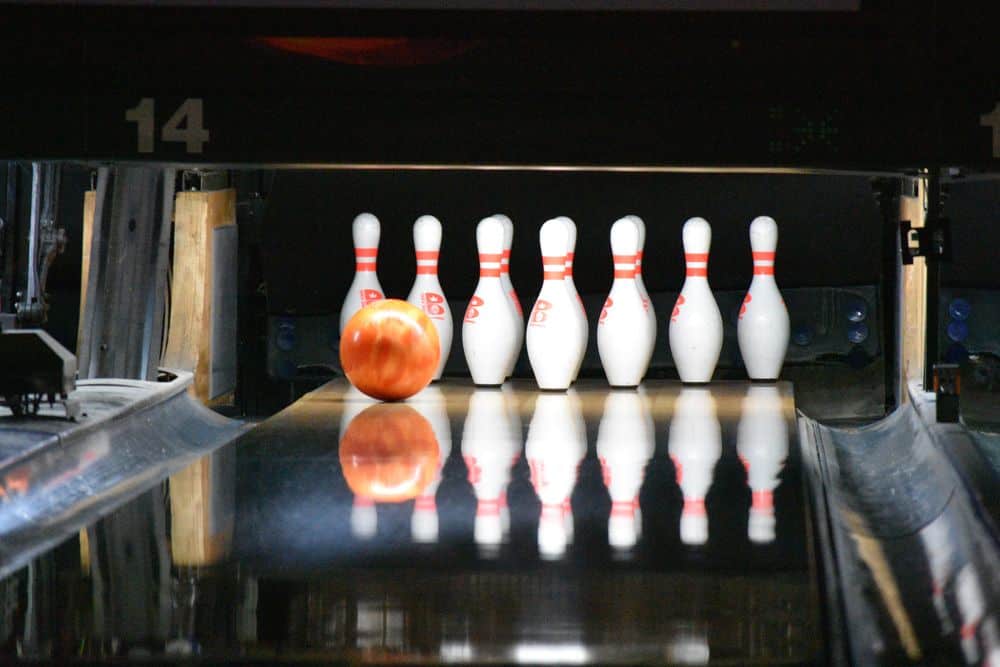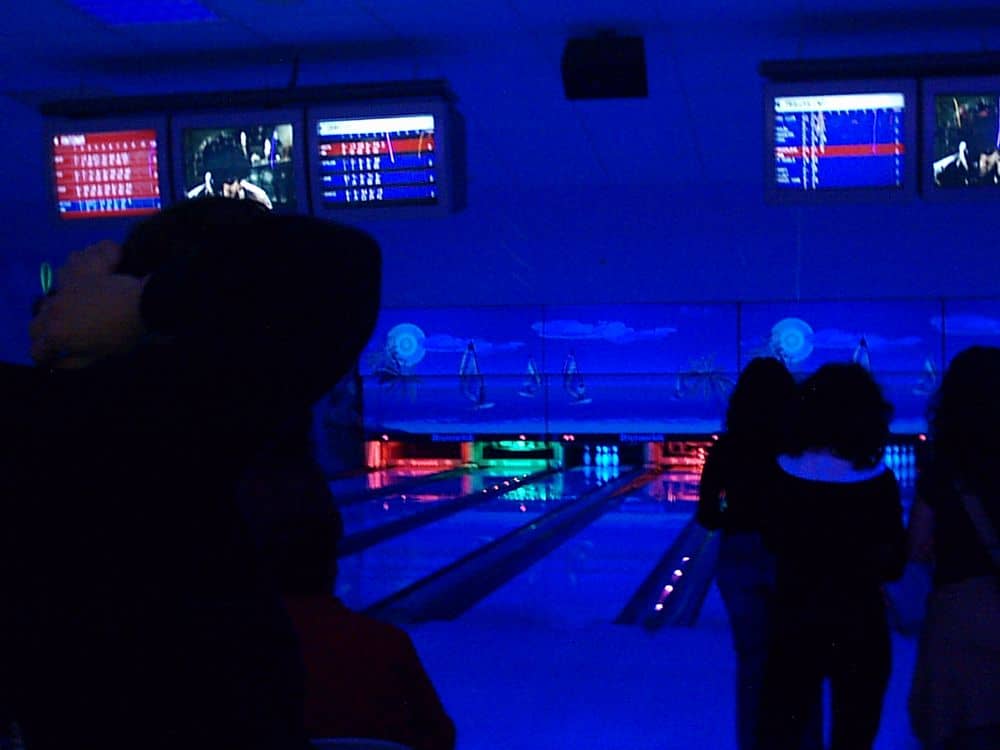Bowling is a popular pastime enjoyed by many people around the world. A fun activity to do with friends and family, it’s no surprise that bowling alleys can be found in almost every town and city. However, there is one question that often arises among those who frequent these alleys: why is bowling so expensive?
For those who have been curious about this topic, we will delve into the factors that contribute to the high costs of this beloved sport. While it may seem like a simple game of knocking down pins, there are actually several expenses associated with running a bowling alley.
From lane rentals to shoe rentals to food and beverage costs, each aspect plays a role in determining the overall price of playing a game of bowling. By taking an analytical approach to this subject matter, we can better understand why prices are what they are and how they impact both consumers and business owners alike.
So let’s explore the different factors that make up the cost of bowling and discover why it remains an expensive activity for many people.
Lane Rental Fees
Lane rental fees constitute a significant portion of the costs associated with participating in the sport of bowling. These fees vary based on peak hours, off-peak hours, and whether it is a weekday or weekend.
During peak hours, which are typically in the evenings and weekends, there is usually higher demand for lanes which results in an increase in rental prices. On the other hand, during off-peak hours such as weekdays before 5 pm, lane rental fees tend to be much lower.
Weekday rates for lane rentals tend to be more affordable than weekend rates. This is because many individuals have work or school obligations during weekdays, resulting in fewer people using the lanes during these times. As a result, alley owners may offer lower lane rental fees to attract customers during these less busy periods. However, during weekends when more people are available to bowl and demand for lanes increases significantly, alley owners raise their prices accordingly.
In summary, bowling can be expensive due to various factors including lane rental fees. The cost of renting a lane varies depending on factors such as timing and day of the week. To save money on lane rentals one should consider bowling during off-peak hours or weekdays instead of weekends and peak hours when prices tend to rise significantly higher. Ultimately it’s important to weigh the fun factor versus cost factor when deciding how frequently one wants to participate in this popular pastime activity.
Shoe Rental Fees
The cost of renting shoes for a game of ten-pin can be exorbitant, with some establishments charging as much as triple the price of a standard movie ticket. This is because bowling alleys have to regularly replace their rental shoes due to wear and tear. Additionally, they must sanitize them after each use to prevent the spread of infections. These factors contribute to the high shoe rental fees.
However, there are alternatives to renting shoes that can help save money in the long run. One option is to purchase your own pair of bowling shoes. While it may seem like a significant upfront cost, owning your own pair can ultimately save you money since you won’t have to pay rental fees every time you bowl. Furthermore, owning your own shoes ensures greater comfort and fit than using rental pairs that may not properly match your foot size or shape.
A cost-benefit analysis should be conducted before deciding whether purchasing bowling shoes is worth it for an individual’s specific situation. For frequent bowlers who visit the alley multiple times per month, investing in personal footwear may be more financially beneficial than constantly paying for rentals. However, those who only bowl occasionally may not benefit from such an investment and should stick with renting shoes during their visits to the alley.
Game Fees
Despite the wholesome and recreational nature of bowling, even a single game can come at a surprisingly steep cost, making it an activity that may not be as accessible to all members of society as one might expect. The game fees at bowling alleys are often the biggest contributor to the high costs.
Bowling is typically priced by the number of games played, with each game costing anywhere from $4 to $8 per person. This may not seem like much for a single game, but when considering that most players will want to play multiple games in a session, these costs can quickly add up.
Furthermore, many bowling alleys use complex scoring systems that require additional fees or charges. While some venues offer basic score tracking as part of their standard fee structure, others charge extra for advanced scoring systems such as automatic pin resetting or computerized scorekeeping. These additional features may enhance the playing experience for some players but ultimately drive up the total cost of playing.
While these costs can seem daunting for individual players or small groups looking to bowl casually, there are ways to mitigate them. Many bowling alleys offer league discounts for regular players who sign up for ongoing tournaments or competitions. Additionally, group rates and discounted packages can help make bowling more affordable for families or larger groups looking to enjoy the sport together.
However, despite these options being available, they do not completely eliminate the high cost associated with playing this beloved pastime regularly.
Maintenance Costs
To keep a bowling alley functioning properly, regular maintenance is required which can add to the overall cost of running such an establishment. Equipment upkeep and repair expenses are a major contributing factor to these costs. Bowling alleys require specialized equipment that must be maintained and repaired regularly to ensure optimal performance. This includes everything from the lanes themselves to the automated scoring systems.
In addition to equipment upkeep, staff training costs and labor fees also contribute significantly to the maintenance costs of a bowling alley. Properly trained staff members are essential for ensuring that all equipment is being used correctly and effectively. Additionally, having knowledgeable employees on hand can help prevent costly downtime due to malfunctions or other issues.
It’s important for bowling alleys to prioritize regular maintenance in order to provide their customers with the best experience possible while also keeping their operating costs manageable. While it may seem expensive upfront, investing in regular maintenance can actually save money in the long run by preventing more costly repairs or replacements down the line.
By staying on top of equipment upkeep and providing proper staff training, bowling alley owners can keep their establishment running smoothly while also providing their customers with a fun and enjoyable experience.
Food and Beverage Costs
Food and beverage costs are a significant expenditure that must be considered in the overall budget of running an entertainment establishment. Bowling alleys are no exception to this rule, as they generate a considerable portion of their revenue from food and drinks sales. However, for patrons, the prices on the menu may seem inflated, leading them to question why bowling is so expensive.
For starters, menu prices at bowling alleys tend to be higher than those found at fast-food chains or convenience stores. This is because bowling alleys have higher overhead costs associated with running their kitchens and bars.
Additionally, many establishments offer gourmet options that require more expensive ingredients and preparation methods, which can further drive up the cost of menu items.
Despite the high menu prices, it’s worth noting that profit margins on food and beverages aren’t as substantial as one might think. In fact, profit margins for these items can range anywhere from 10% to 25%, depending on the specific product sold.
While this may sound like a lot of money, it’s important to consider all of the expenses that go into running an establishment – such as rent/mortgage payments, utilities bills, payroll expenses – before making any conclusions about pricing structure.
Ultimately though these expenditures contribute towards maintaining an enjoyable experience for customers who visit bowling alleys regularly and expect quality service every time they bowl or dine there.
Conclusion
Bowling has been a popular sport for decades, but why is it so expensive? The high cost of bowling can be attributed to several factors.
Firstly, lane rental fees are charged by bowling alleys to cover their overhead costs. This includes the cost of maintaining and upgrading the lanes, as well as paying for utilities such as electricity and water.
In addition to lane rental fees, shoe rental fees also contribute to the overall cost of bowling. Shoes must be regularly cleaned and maintained in order to ensure that they are comfortable and safe for customers to wear.
Game fees are another factor that contributes to the high cost of bowling. These fees cover the costs associated with staffing the facility, including salaries for employees who work at the front desk and those who maintain the equipment.
Despite these expenses, there is one interesting statistic that may surprise readers: according to a report from IBISWorld, revenue from bowling alleys in the United States was expected to increase by 2.5% annually between 2016-2021.
This suggests that despite its high cost, many Americans still enjoy spending time at their local bowling alley. Whether it’s for entertainment or competition purposes, bowling continues to be a beloved pastime for people across all age groups.
Overall, while expensive prices may deter some potential customers from visiting their local bowling alley regularly, it seems that many others are willing to pay for this unique experience regardless of its price point.
As long as people continue enjoying this fun-filled activity with friends and family members alike – even if it comes at a premium price – then there will always be demand for quality bowling establishments throughout America.









